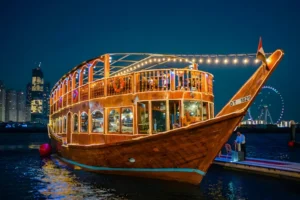Walking into a restaurant is not just about the food for some people, it’s an experience that involves all the senses. While delicious cuisine is undoubtedly crucial, the ambiance created by restaurant interior design plays a significant role in shaping the overall dining experience. In this article, we will delve into the world of restaurant interior design and explore how it impacts customers on a psychological level.
1-Color Scheme and Its Psychological Effects on Diners
Choosing the right color scheme for a restaurant is more than just a matter of aesthetics; it directly influences the mood and appetite of diners. Warm tones like red and orange can evoke a sense of energy and excitement, while cooler hues like blue and green may promote a more relaxed atmosphere. Understanding the psychology behind color choices is crucial for creating an inviting and comfortable dining space. you can also get help from a professional restaurant interior design company for better understanding and implementation of a color scheme best suited for your overall ambiance and vibe of the restaurant.
2-Furniture and Layout Considerations
The furniture and layout of a restaurant are essential elements that contribute to the overall dining experience. Comfortable and functional furniture is key, allowing diners to relax and enjoy their meals. Additionally, the layout of tables and seating arrangements impacts traffic flow and the overall ambiance. Striking the right balance between functionality and aesthetics is a crucial aspect of effective interior design.
3-Lighting Design and Its Effects on the Dining Atmosphere
The importance of lighting in restaurant interior design cannot be overstated. Natural and artificial lighting can significantly influence the mood and atmosphere of a dining space.
Properly placed lighting creates focal points, enhances visual appeal, and contributes to the overall dining experience. Whether it’s a cozy, dimly lit setting for an intimate dinner or bright lighting for a lively brunch spot, the choice of lighting design sets the tone.
4-Theme and Concept Integration
A well-executed theme and concept integration align the interior design with the restaurant’s brand and cuisine. This goes beyond mere decoration; it creates a cohesive experience for diners. Successful integration of themes enhances the restaurant’s identity, making it more memorable for customers. From rustic and traditional to modern and minimalist, various design themes can be used to complement the overall dining concept.
Psychological Impact on Customers
The moment a customer steps into a restaurant, the interior design sets the stage for their dining experience. Entrance design plays a crucial role in creating a welcoming and memorable first impression. Elements like decor, lighting, and the overall ambiance communicate the restaurant’s identity and influence customer perceptions from the very beginning.
1-Influencing Customer Behavior Through Design
Interior design goes beyond aesthetics; it can influence customer behavior. Strategic design choices can encourage longer dwell times, fostering a relaxed and enjoyable atmosphere. Moreover, thoughtful layout and decor enhance social interaction and group dynamics, contributing to a positive overall experience for diners.
2-Customer Satisfaction and Loyalty
The correlation between a well-designed interior and positive customer reviews cannot be ignored. Customers appreciate a thoughtfully crafted dining environment, and satisfaction with the overall experience often translates into loyalty. Examining case studies of restaurants that have successfully leveraged interior design for customer loyalty provides valuable insights into the tangible benefits of investing in a well-designed space.
Collaborating with Restaurant Interior Designers
Creating an effective restaurant interior design requires collaboration between chefs, owners, and interior designers. Aligning the design with the menu and culinary concept ensures a seamless and holistic experience for diners.
A collaborative approach allows for the incorporation of unique elements that reflect the essence of the restaurant. Maximizing impact within budget constraints is a common concern in restaurant interior design. While it may seem like a significant investment, the long-term benefits often outweigh the initial costs.
Finding a balance between aesthetics and practicality is essential to creating a space that not only looks good but also functions efficiently.





















